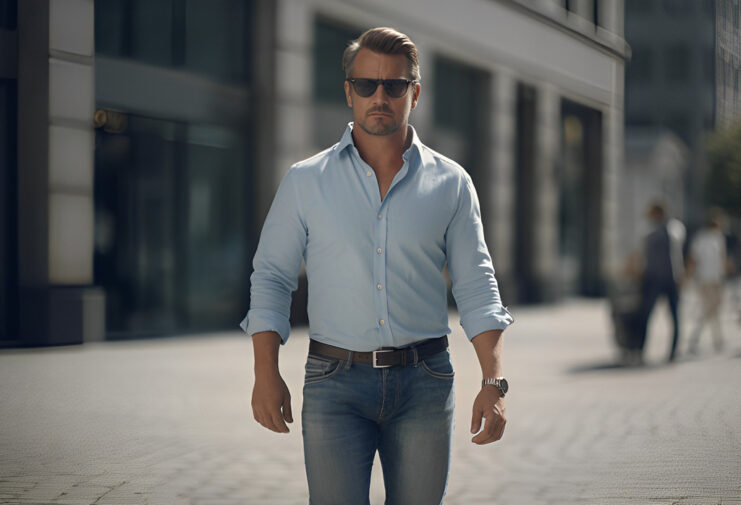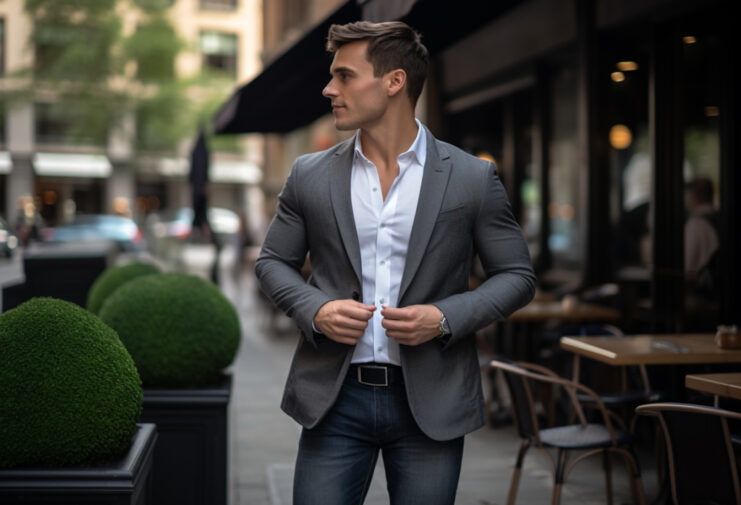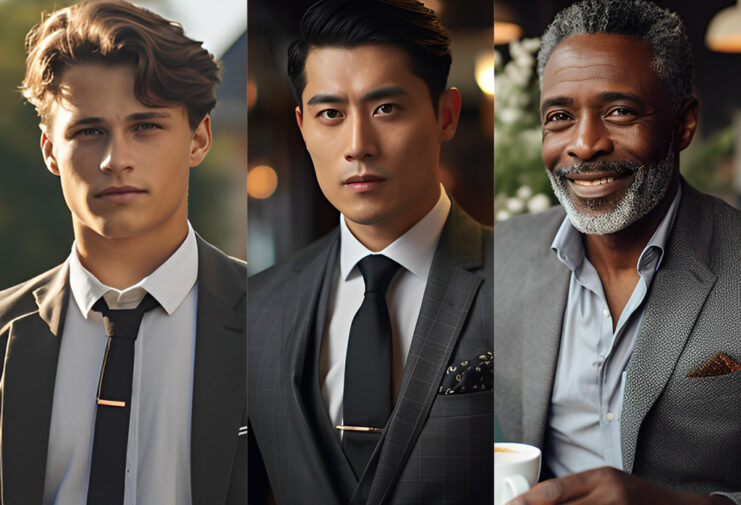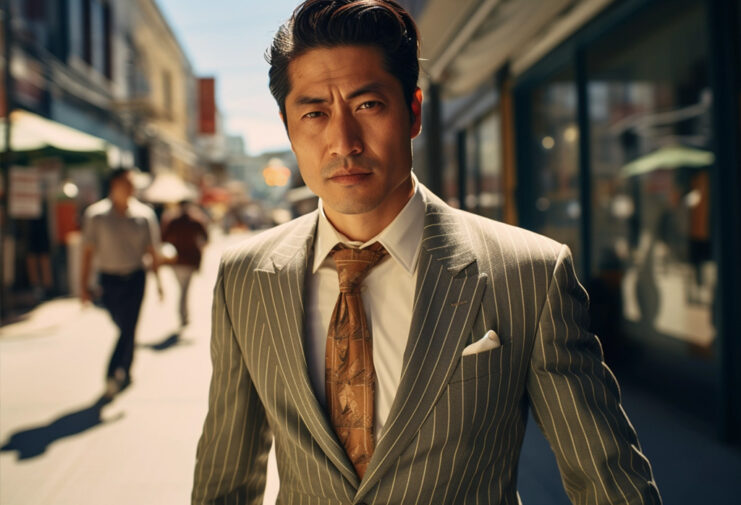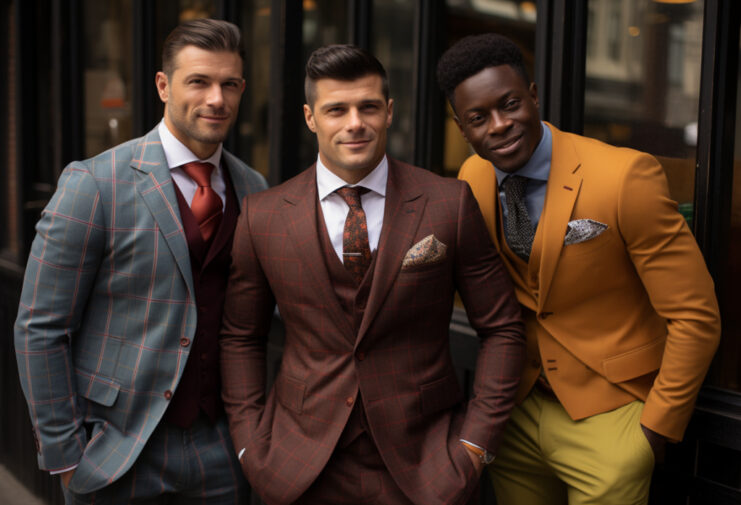In our last section we talked about suit fabric colors.
Many suits come in a single, solid color, and even those that do not are almost always dominated by one color, such that we can talk of it as a “navy blue suit” even if it has colored stripes.
But that doesn't make the striped navy suit the same as a solid one.
Patterns affect the formality of the suit (typically by making a suit less formal than its solid version would have been).
They can also create new visual impressions, such as making a man look taller or shorter.

You should understand the effects of all the traditional suit patterns before selecting your cloth. Here we talk specifically about patterns made from colors, either by dyeing or, in the case of pinstripes, by sewing differently-colored threads across the base color — in a later section we'll talk about textures and weaves, which can also create patterned effects.
- Solid Colors – The simplest and most formal option. Solid suits look business-like and sturdy. In dark colors they also have a very slimming effect that broader men may want to take advantage of. Very Formal Pattern.
- White Pinstripe – A “pinstripe” should be exactly that — the width of a pin, roughly, no more. Wider stripes are not technically pinstripes, and are less formal than the narrow pinstripe. A plain white pinstripe is generally considered just as formal as a solid color, and is usually seen on charcoal gray or dark navy blue suits. Vertical striping of any kind tends to make the wearer look taller. Very Formal Pattern.
- Colored Pinstripe – Charcoal suits with lavender, orange, or other contrasting pinstripes are becoming reasonably common. They are not as formal as a plain white pinstripe, and should not be worn in the strictest business settings. Somewhat Formal Pattern.
- Thicker Stripes – Other stripe options include “chalk stripes,” which are thicker white lines, “rail stripes” which use two parallel lines rather than a single one, and combinations of varying thicknesses and colors called “variegated stripes.” These are all less-formal options, but the bolder vertical pattern makes the wearer look taller. Less Formal Pattern.
- Candystripe – Candystriping refers to stripes of two alternating colors that are equal in width. It's very rare in suits with one exception: seersucker suits are almost always candystriped, usually in blue and white or green and white. Outside of that specific fabric it's a very informal choice that borders on novelty costuming. Very Casual Pattern.
- Plaids/Tartans – A muted tartan (frequently called “plaid” in America) is made of crossing vertical and horizontal stripes with varied spacing. In suits they usually only involve two or three colors, though traditional Scottish clan tartans are often brighter. All tartans have a casual, country-and-weekend association, except when worn as formal clan colors at a traditional Scottish occasion. Less Formal Pattern.
- Glen Check/Prince of Wales – This is a specific tartan associated with the British Royal Family. It is primarily monochrome, made of subtly-differing grays, and is a business-acceptable pattern in all but the most formal suit-and-tie gatherings, making it popular with men whose work environment limits them to very conservative, traditional suits. Somewhat Formal Pattern.
- Windowpane – Unlike tartans, which have differently-spaced intersections, windowpane check is made with thin lines crossing in a wide, evenly-spaced grid. It's a casual pattern best suited for weekend wear, or “casual Friday” suits in some offices. Heavy horizontal elements can make a man appear shorter and stouter, making this a poor choice for men already built along those lines. Very Casual Pattern.
- Microgrid – Windowpane writ small, microgrid has a very small-scale grid of evenly-spaced horizontal and vertical lines intersecting. It's much more common on shirts than suits, but you do occasionally see things like a black-on-charcoal or light-gray-on-medium-gray microgrid. Done in very closely-related colors it's an informal pattern with an interesting, subtle effect. Done in more contrasting colors it would look absurd. Somewhat Casual Pattern.
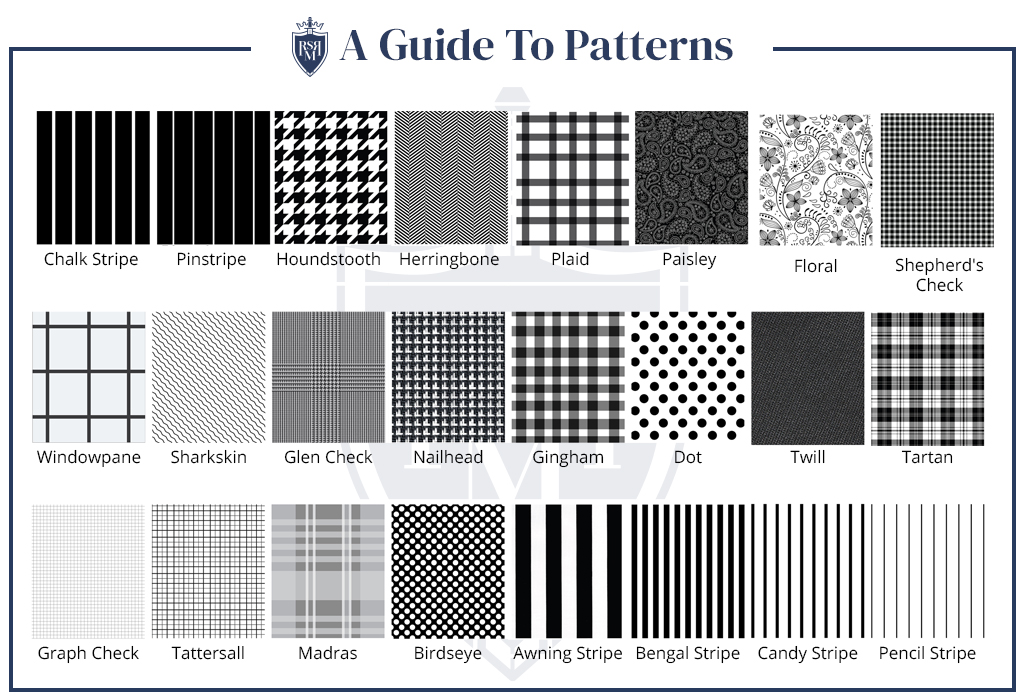
Choosing your suit pattern isn't actually as hard as memorizing all of these, happily. It really only boils down to asking a few questions, all of which will tell you what fabric pattern is the best choice:
Is this suit for business or pleasure?
A business suit narrows your options down quickly. Solid dark colors or a very dark color with a white pinstripe are the only choices suitable for the most formal business occasion.
More relaxed business suits are not uncommon in offices where suits and ties are the daily requirement, and in these settings it's not unusual to see slightly broader or more varied stripes and Prince of Wales check suits as well. If you're a daily suit wearer shopping for a third or fourth suit or beyond, these are good options.
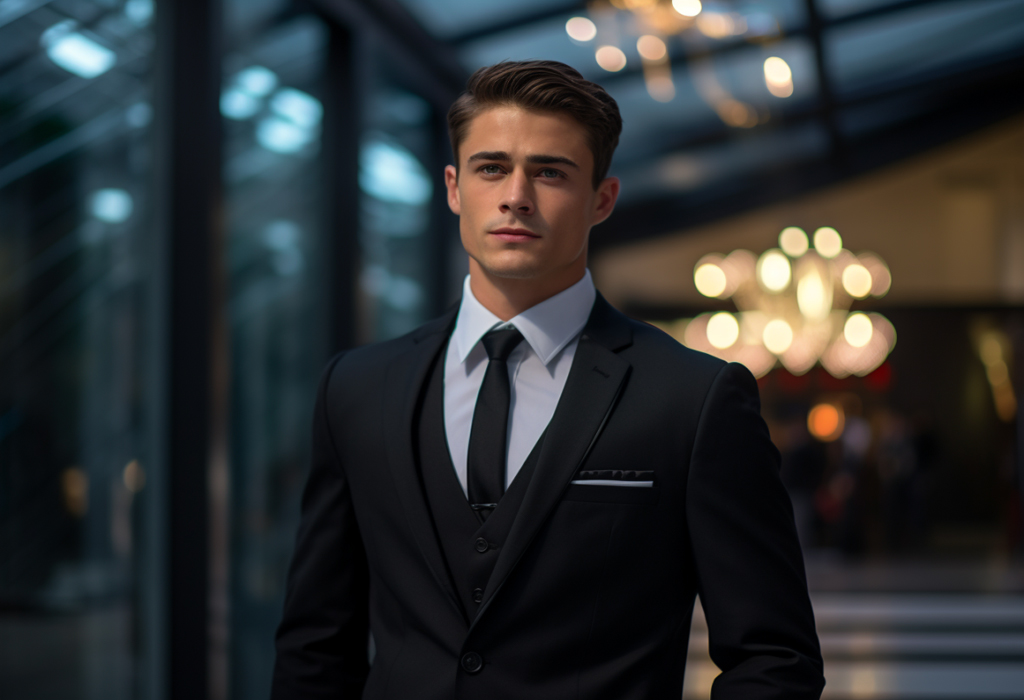
If you're one of the few remaining men who enjoy wearing suits at social and weekend engagements, a bolder stripe or check should be right up your alley. You in fact want something with a noticeable pattern — it makes it clear that you're wearing this suit for your own pleasure and other people's enjoyment, rather than because you left it on after work.
What patterns in your existing wardrobe does your suit need to work with?
Pattern-matching is a relatively simple art: your suit, shirt, and tie patterns should never be the same basic pattern in the same general scale. So if you have a wardrobe that's heavy on pinstriped shirts, a pinstriped suit is going to be touch to match with them.
Solid suits will always be the easiest to match, though they won't go well with shirts that are very similar colors. You need at least some contrast, even in a muted outfit.
Are there patterns that don't suit your physical frame?
Very tall men may want to avoid pinstripes and other vertical patterns. These already make men look taller, and once you're getting near the two-meter mark the effect can be kind of looming. Short men, conversely, will want to stay away from checks and tartans, since the horizontal lines have a shortening effect.
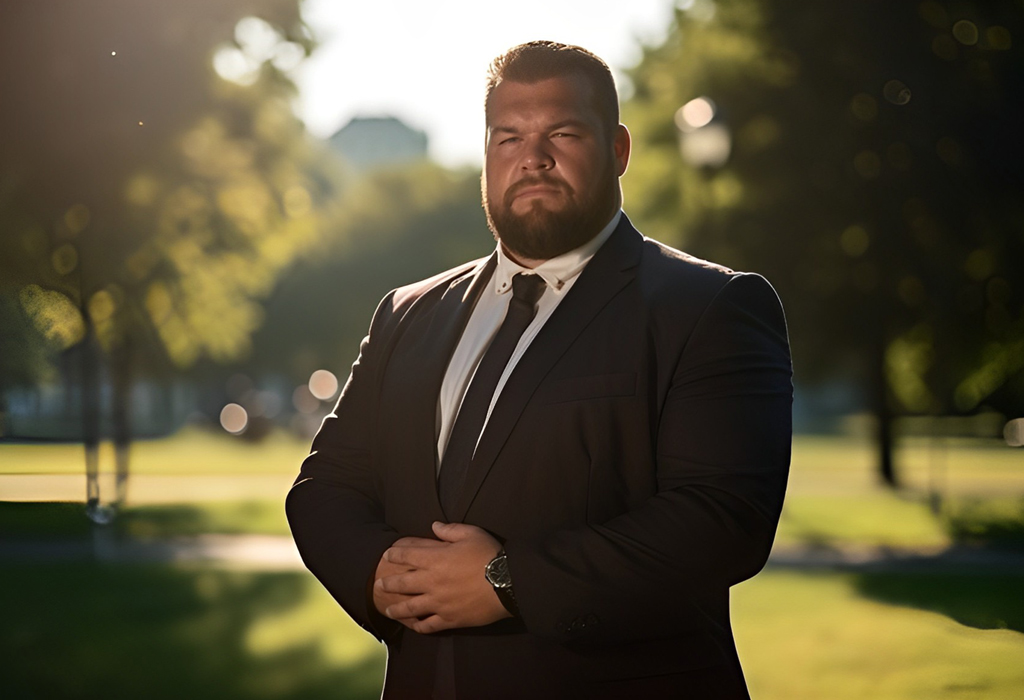
Stout and broadly-built men who want to appear slimmer should stay away from bold patterns in general. A dark solid is actually more slimming than a vertical stripe, and if the stripes are bent by the shape of the wearer's chest and stomach they wind up looking unattractively stretched.
Between those three considerations — business or pleasure, your existing wardrobe, and your physical frame — you should have no trouble narrowing down the right family of patterns for you. Within that, choose as your tastes dictate!
Once you have a color and a pattern in mind it's time to get into the real nitty-gritty of selecting a tailored suit's fabric: the texture and weave of the cloth itself. Read on…
Want more?
Discover How The Right Image Helps You Make More Money, Attract Women, & Command Respect
Learn the secrets of style in a structured environment leveraging my proven step-by-step master programs.

